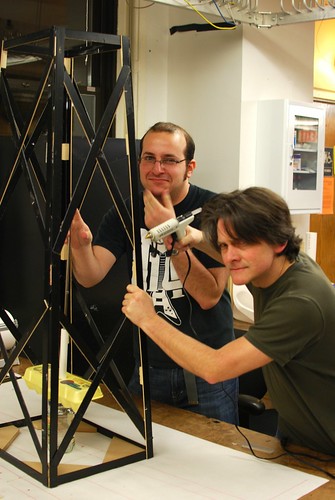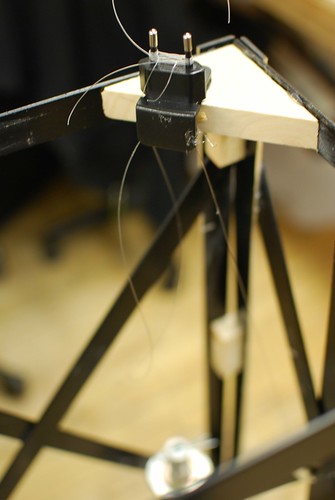Our first assignment in Mechanisms and Things That Move earlier this semester was to build a Rube Goldberg device that cracked an egg using no fewer than 5 energy transfers. The majority of the egg and no more than half of the shell had to end up in a jar or other container at the end.
I worked with Morgen Fleisig and Mike Cohen.
Here’s a video of our Rube Goldberg machine in action:
There Will Be Yolk: A Rube Goldberg Machine from Greg Borenstein on Vimeo.
That went by fast so let’s walk through the energy transfers step-by-step.
You started off the machine by pulling down a lever.
The lever was attached to a piece of fishing line which traveled over a series of pulleys.
The rising fishing line lifted a metal weight off a balance beam
The falling companion weight depended from the balance beam by a brass chain, which hit two pieces of wire closing a switch connected to a 9v battery.
The short circuit burned a fuse made out of steel wool.
The burning fuse cut a piece of fishing line tied to the top of a steel rod inside a guide tube made from PVC.
The steel rod fell down through the egg, piercing it with an attached soldering iron tip.
The pierced egg dripped through the whole in its plastic seat into the jar below.
We built the device inside of this very oil derrick-looking superstructure that Morgen put together from wood slats. Hence the name: There Will Be Yolk, a play on There Will Be Blood by Paul Thomas Anderson:








